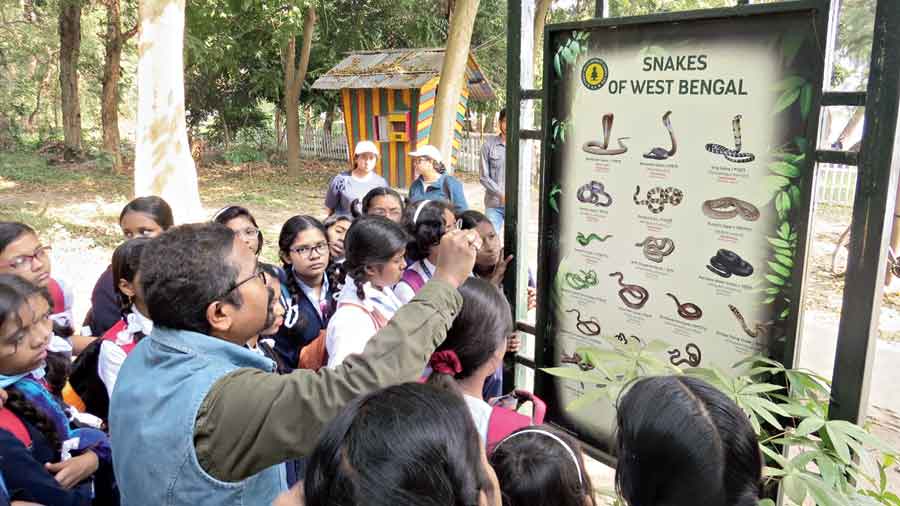The forest department has started offering a guided nature education trip for school and college students at Banabitan, the only remaining patch of greenery in Central Park.
“Banabitan boasts a variety of flora and fauna. Students of cities do not get access to such rich biodiversity in the urban area for the study of nature. For that, they need to travel out of town, which involves constraints of both time and money. We realized that if we can involve the schools then they can bring their students for environmental studies which is an integral part of the syllabus now. They will get a chance to be given on-ground lessons in biodiversity, conservation, ecosystem and management. A break from the monotony of the daily routine will also rejuvenate them,” said Rabindranath Saha, conservator of forests, parks and gardens, and ex-officio general manager, green projects wing, West Bengal Forest Development Corporation Ltd (WBFDCL).
WBFDCL has set up two “experience zones” inside Central Park. One is a bird park and the other is a mini Jaldapara zone where amid the flora of the zone, the fauna has been visually introduced using models of animals typical of the area.
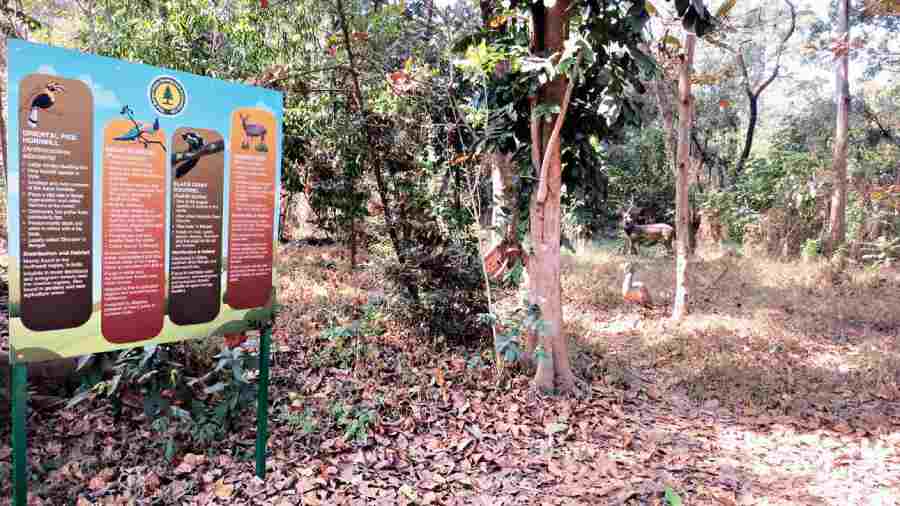
A board shares information on the models inside.
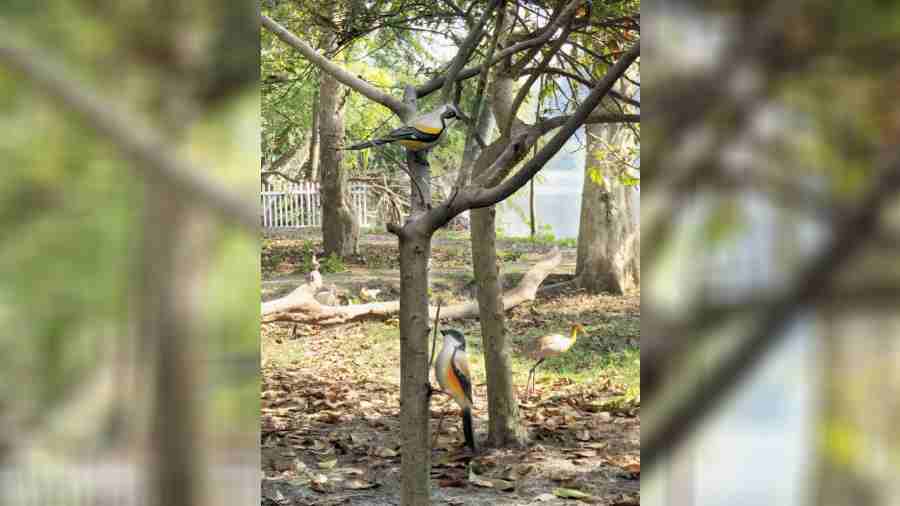
Models of birds in bird zone.
“Since it is not possible for us to bring live animals, we have placed models of elephants and rhinos which are characteristic of this zone. The habitat is completely natural. So when you walk through a forested land and the guide explains what an elephant eats or how you can gauge what mood it is in, you will find the lesson much more convincing here than in a zoo, where the animals may be living but are in captive settings,” said Saha.
Schools or colleges have to pay a fee of Rs 200 per student for a whole-day tour and Rs 100 for half a day. This will help raise funds for the maintenance of the park, officials say.
The first walk took place on January 12 with students of Baranagar Mohan Girls High School. Giving them a guided tour of the experience zones was Anindya Guha Thakurta, assistant divisional forest officer, urban recreational forest division.
Standing in front of a board with pictures and names of snakes of Bengal, he explained to the girls gathered around: “King Cobra is the most venomous. It can even kill an elephant. But most people in India die of Common Krait bite as it is easy to mistake it for an ant bite. There is hardly any pain till the venom spreads. Banded Krait (shakhamuti) eats Common Krait (kalaj). In south Bengal, Common Krait population is on the rise as Banded Kraits are dwindling in number,” he said asking if anyone had read Sherlock Holmes. “It was a banded krait that used to be slipped into the room to kill people,” he added, referring to Sir Arthur Conan Doyle's The Speckled Band. “Snakes are harmless. They don't bite unless they are harmed. You should pass on the message to others,” he said.
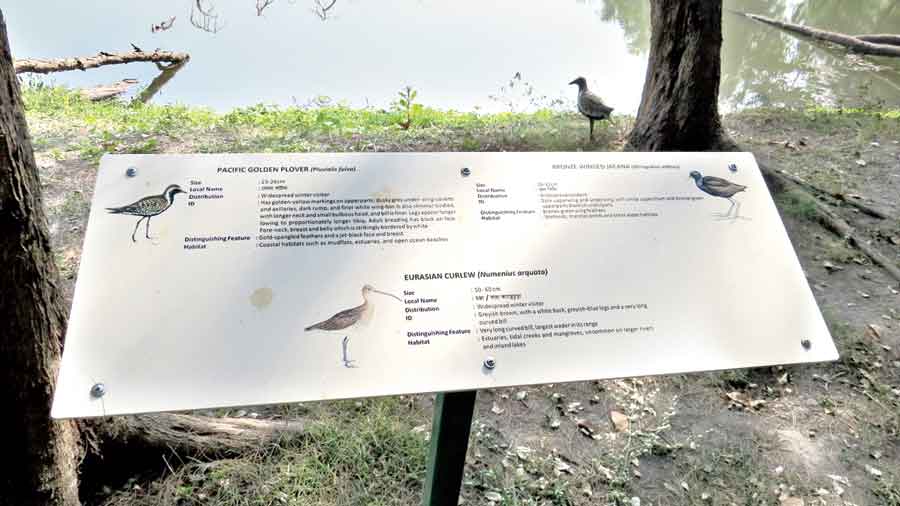
Fake feathers: A model of a bird perched by the waterbody with an information board in the foreground
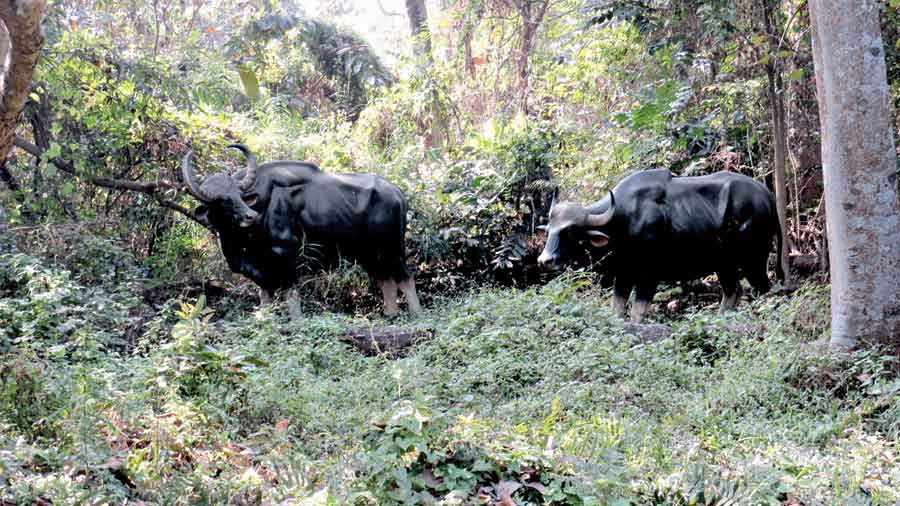
Models of two Gaurs in the mini Jaldapara zone. Pictures by Sudeshna Banerjee
Other than the introductory boards, there are lifesize models of a leopard, wild dogs, porcupines, gaurs, civet, etc. partly hidden by foliage.
A bird park too is part of the tour. It has models of birds seated atop branches and perched on banks of waterbodies. There are even models of eggs in artificial nesting sites.
These two zones, along with new walkways, signages and main gate, were opened around March 2021 to attract visitors.
“Our girls simply loved the experience. They stay in a congested area and come from families where traveling to forests is not an option. They have been sharing their excitement at home and in class so much that those who did not go are lamenting the missed chance,” Godhuli Mukherjee, headmistress of the school who stays in Sunny Fort, New Town, later told The Telegraph Salt Lake.
